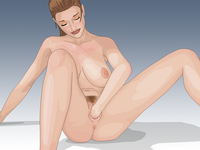
Photo from wikipedia
AIM The management of patients with congenital anterior abdominal wall defects remains challenging, particularly in cases of giant omphalocele. In 1948, San Martín described a surgical technique for the repair… Click to show full abstract
AIM The management of patients with congenital anterior abdominal wall defects remains challenging, particularly in cases of giant omphalocele. In 1948, San Martín described a surgical technique for the repair of large midline incisional hernias in adults without the need for a mesh. The purpose of this report is to describe our experience with this technique for the delayed closure of giant omphaloceles. METHODS We retrospectively reviewed the outcomes of all patients with giant omphalocele managed with the San Martin technique between September 2013 and March 2019. Data collected included birth weight, gestational age, associated malformations, neonatal hospital stay, age at the time of the abdominal wall closure, days on mechanical ventilation (MV) after the closure, time to initiation of enteral feedings, intra- and postoperative complications, and postoperative hospital stay. RESULTS A total of 8 patients were included in the study. The median birth weight was 3.190 (2.150 to 3.400) grams. The median gestational age was 35 (32 to 38) weeks. The median age at surgery was 6 (5 to 13) years. The median postoperative days on MV was 3 (3 to 11) days. Enteral feeding were initiated postoperatively at a median of 4 (2 to 4) days. There was one intraoperative complication (minor vascular injury). There were no short-term or long-term complications directly related to the surgical technique. The median postoperative hospital stay was 10 (6 to 16) days. The follow-up was 18 months to 8 years. CONCLUSION We believe that the San Martín technique is a valid alternative for the delayed closure of giant omphaloceles. LEVEL OF EVIDENCE According to the Journal of Pediatric Surgery this research corresponds to type of study level IV for case series with no comparison group.
Journal Title: Journal of pediatric surgery
Year Published: 2021
Link to full text (if available)
Share on Social Media: Sign Up to like & get
recommendations!